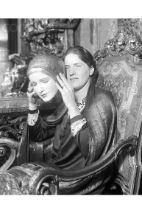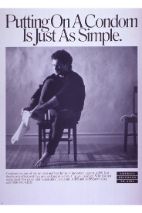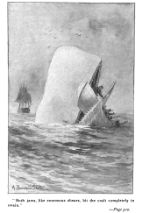In her book Too Fat, Too Slutty, Too Loud: The Rise and Reign of the Unruly Woman, American journalist Anne Helen Petersen reveals the fraught relationship between celebrity culture and feminism.

Jan and Yolanthe break up. She moves out of their home and takes everything they own with her. We, the public, have our own ideas about that. We determine whether we think that is “appropriate” or not. Or perhaps we think we shouldn’t have an opinion about her decision, but that’s also an opinion. Celebrity culture is, in essence, a way for us to build, adapt and strengthen our moral frameworks. We project our own questions about how to be onto stars; by means of their identity, we determine who we are ourselves. By getting involved in the Jan and Yolanthe discussion, we are adjusting our own moral compasses.
In her new book Too Fat, Too Slutty, Too Loud: The Rise and Reign of the Unruly Woman, American journalist Anne Helen Petersen, who holds a PhD in celebrity gossip, reveals the fraught relationship between celebrity culture and feminism. We find it much easier to project our ideas onto female stars, as opposed to male stars. We prefer to watch her; we judge her more fiercely. We force her into the tight fit of our stereotypes: whore or saint, Girl Next Door or Manic Pixie Dream Girl. A Lolita, an Ophelia, a Lulu, a Samantha. We weigh her against our measure of “good taste”, which determines how she should age (elegantly), should be pregnant (sweetly) or should dress (classily). These are issues that apply exclusively to women, and not men.
In the ten essays that collectively form Too Fat, Too Slutty, Too Loud, Petersen introduces ten prominent women who deviate from the norm in divergent ways. Each essay is named after a slurred characteristic popularly targeted towards the woman in question: she is "too gross", "too queer" or "too fat". In each, Petersen explains exactly how that label works. Why, for example, we consider Serena Williams too strong, or why we think Hillary Clinton sounds too shrill. Why Lena Dunham should keep her clothes on.
Petersen’s book is not an indictment, yet it is no celebratory ode to women either. It’s not an optimistic tale about boundaries being sought out, stretched and broken. Instead Petersen demonstrates how many of the women discussed eventually temper their tone; how they become milder, more compromising. Too Fat, Too Slutty, Too Loud is about seeking balance between the idiosyncratic and what we consider acceptable. Petersen’s tone of voice is not applauding to begin with. The women featured in her essays are fallible, make mistakes and don’t necessarily set out to promote change. Despite this, Petersen reveals – such as in the case of Kim Kardashian – some of them do just that.
1991, Petersen writes in her essay ‘Too Pregnant’, was the year that a magazine cover made history. By appearing highly pregnant and stark naked on the cover of Vanity Fair, actress Demi Moore broke an age-old taboo: public pregnancy. The pregnant body is unbecoming; obscene. Vivid proof of a woman’s sexuality. Talk of pregnancy was forbidden during the nineteenth century and up until the 1960s, Hollywood avoided all depictions of childbirth in movies. Pregnant actresses removed themselves from public view, emerging only after they had given birth.
Moore didn’t only inspire change; she sparked a hype. Now, a quarter of a century later, the baby bump is a spectacle, one exploited by the media and pregnant stars alike. But there are rules. The pregnant body must remain – with exception of the bump – thin. It is stylized in the appropriate fashion. The pregnancy is cute and the pregnant woman is inherently happy.
The pregnancy of Kim Kardashian, a star doused in an air of tackiness, did not adhere to this ideal. She swelled up and grew fat. She continued to dress in the tight, revealing outfits she always wore. And, more importantly, she did not enjoy her pregnancy. The media pounced on Kardashian’s growing body. They hunted after photographs of her eating (“stuffing herself”), looking uncomfortable or fat. One photograph of Kardashian in a tight-fitting black-and-white colorblock dress, accompanied by a picture of a killer whale, even went viral.
But it wasn’t only public opinion that dubbed Kardashian’s pregnancy as “imperfect”; it was Kardashian herself who struggled with a sense of failure. Her unruliness was an unruliness by default. But by speaking out about her discomfort, her doubts and the way her body turned against her, she unwittingly called the notion of the ideal pregnancy into question.
In her essay ‘Too Old’, Petersen contends that if media describe a woman as looking good, what they mean is that she looks young. If she looks “amazing for her age”, that means: she looks like someone younger. The more mature female celebrity must perform a complex balancing act: she must not look old, but also not visibly try too hard to look young. Enter: Madonna, the woman who decided to stop time approximately fifteen years ago. The work that the Queen of Pop has put into her body (exercise, a strict diet, plastic surgery) is meant to be discernable; evidence of her superhuman discipline.
Her music, her private life, her photo shoots and music videos: nothing that Madonna does falls in line with the norm of “aging elegantly”. During the Met Gala last year, she arrived in a black lace dress that largely exposed her backside. The criticism was: Who wants to see Madonna’s 56-year-old ass? Madonna responded with a sneer: This is what a 56-year-old ass looks like. Petersen interjects – not all fifty and sixty-year-old asses look like that; that’s what Madonna’s body looks like, a body that has elaborately been worked on and tinkered with. Madonna, Petersen writes, has always been the ultimate embodiment of postmodern feminism. Pleasure, power and desire of the individual are, to her, more important than the general emancipation of women.
Petersen’s critique continues. Pop music intrinsically reflects the ideology of the time; it’s a forward motion. Madonna has always understood this very well. Time and time again, she reinvented herself and her sound, repeatedly rising like a proverbial phoenix from the ashes of her past self. Lately, however, she has only been referencing the past; her old sound, her old style, her old body. Petersen quotes journalist Lindy West: ‘It’s not that she’s forgotten how to be young, it’s that she’s forgotten how to be new’.
Where Petersen uses the case of Madonna in ‘Too Old’ to not only discuss age, but to also talk about the nature of pop music, she takes on an entirely different cultural phenomenon in ‘Too Loud’. “Midcult”, she writers, is the culture that exists in the gray between highbrow and lowbrow (“masscult”), or ‘anything that makes you feel like you’re doing something smart, but you’re still pretty comfortable or unchallenged doing it’. Time Magazine is midcult. Game of Thrones, Downtown Abbey, David Attenborough. An orchestra performing music by Led Zeppelin.
Another example of midcult – and this really lands Petersen’s point – is Oprah’s Book Club, the platform that Oprah Winfrey uses to highlight and bump her favorite books up the bestseller list. When, in 2001, Winfrey decided to promote The Corrections among her audience of millions, novelist Jonathan Franzen was not happy about it. He did not want to be associated with the midcult; with the book club that was out of step with the ‘high-art literary tradition’ of which he considered himself a part.
Franzen’s elitist remark was received with a wave of criticism, including that of Jennifer Weiner, a journalist that debuted her novel Good in Bed in the same year. Franzen offered his apologies (‘mistake, mistake, mistake’), but Weiner continued to denounce his outmoded ideas about literary culture and literary snobbism in general.
In 2013, Franzen published a diatribe against contemporary culture in The Guardian. In the essay, entitled ‘What’s Wrong with the Modern World’, he lashes out against the ‘yakkers, tweeters and braggers’ that participate in ‘Jennifer Weiner-ish self-promotion’. The epitome of the artist, according to Franzen, is one that retreats from society in order to reflect upon it. With her tweeting and blogging, her commercial success and her “chick-lit” books, Weiner should be denounced as an unworthy author.
Weiner responded: Franzen may rail against self-promotion, in a prestigious medium of choice, but he does include a hyperlink to his webshop at the bottom of his article, where you can purchase his book. Weiner’s indictment went hand-in-hand with her repeated objection against the fact that serious media refused to afford her critical attention and review her books. A midcult author like Nick Horny is taken seriously, she notes, but midcult written by women, with a largely female readership, is dismissed as ‘romance or a beach book’.
The essay about Weiner has the sort of happy ending that would easily suit one of Weiner’s own novels. Not only does she get recognition (and a regular column in The New York Times), but she also comes to terms with the fact that her frustrations came (in part) from her own sense of inferiority. Her vulnerability stands in stark contrast to Nicki Minaj’s total control and independence, discussed in ‘Too Slutty’. Petersen describes how Minaj vigilantly maintains control over her career, how she guards her music and her appearance, how she has no one other than herself to thank for her status and success.
Her carefully crafted image is a natural extension of that. In 2014, Minaj shared the sultry cover for her single ‘Anaconda’ and broke, as they say, the internet. The photograph depicts Minaj half-naked, squatting down and looking back over her shoulder. It was not just exposed in terms of nudity, but rather more importantly, the photograph was explicitly sexy, with her considerable booty prominently on display. With her wigs, extravagant outfits and distinctive alter egos, Minaj has always been known to be playful and quirky. ‘Anaconda’ revealed a new image: hypersexual, but also more natural.
But what does the label “too sexy” actually mean? Too dependent on the male gaze? Too preoccupied with whether men find her attractive or not? Minaj says herself: ‘I’ve proven that I’m an MC. I’m a writer; I’m the real deal, so if I want to take sexy pictures, I can’.
If there is one thing that Minaj is not, it’s dependent. If Petersen makes one thing clear, it’s that Minaj is not interested in what other people think. She determines her own boundaries, sets the bar herself. Her appearance and her persona are not intended to please others; she is the one experiencing the pleasure. If you follow Petersen’s train of thought, this is the height of unruliness. Because, as she writes in her essay about Lena Dunham: ‘Few things enrage, confuse, and repulse audiences more than the suggestion that the primary visual purpose of a woman’s body is not the pleasure of men.’
Petersen analyzes sharply and clearly. Her essays are informative, to the point and accessible. They are smart but not elitist; they are critical but not pushing an agenda. At times, she fails to fully develop a stimulating thought, or provides insufficient arguments to drive one home. She is not necessarily set on convincing people; she knows she is preaching to the choir.
Meanwhile I find myself wondering to what extent Petersen herself struggles with the balance between being quirky and acceptable. What is the status of the author’s unruliness? I wonder about something else, too. How can Petersen think herself out of the equation and the story that she writes? She carefully dissects the mechanisms behind media, and the audiences’ gaze on the female figure. But she herself is looking, and I am doing the same. In the infinite house of mirrors that is celebrity culture, women are looking at women, who are looking at women, who are looking at women.
---
Translation by Roxy Merrell
Originally published in De Groene Amsterdammer

|

|

|

|

|

|

|

|

|

|

|

|

|

|

|

|

|

|

|

|

|

|
